This is my first post from outside our garden. We ventured forth to the annual Ashburton Aloe Festival that takes place in a nature conservancy on the other side of town.
Becoming a symbol of the festival is the tall Aloe ferox, which flowers in the dry winter bushveld of the Lower Mpushini Valley Conservancy, a community-protected area with the Mpushini River at its heart. Conservancy members are dedicated to protecting the valley’s notable biodiversity, while promoting environmental education and tourism in the area.

Over time, the Aloe ferox can grow as tall as six metres. As it grows the leaves that die off remain on the stem in a fire-resistant shielding layer, providing shelter for birds, lizards and other creatures. If you are lucky enough to have one in your garden, consider leaving these protective leaves in place, rather than stripping them off to expose a bare and inhospitable stem
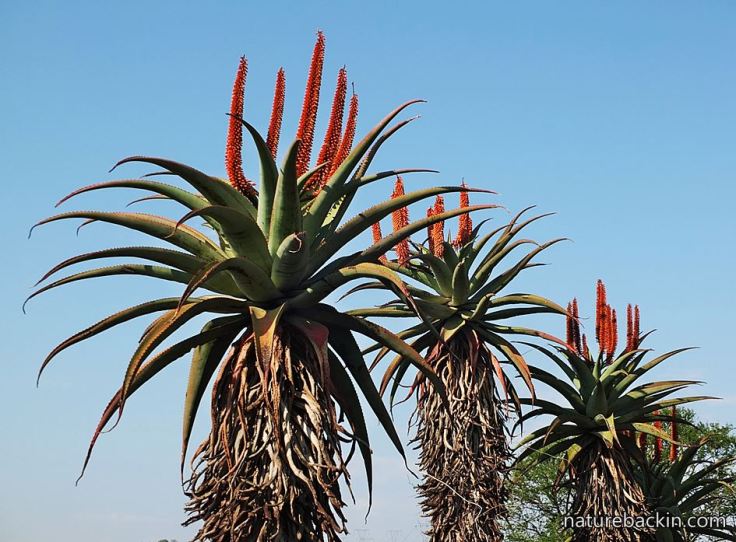
As part of the Aloe Festival programme, we went on a walk near the river, led by bird and tree expert David Johnson, whose gift for portraying the life of trees and explaining their physiology in simple terms, made it clear that the bush is a community of plants rather than a random scattering of individuals.
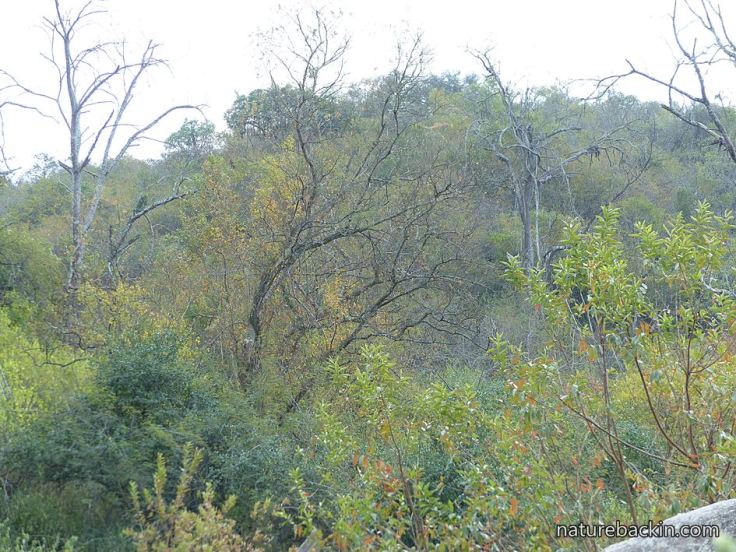
A view across the Mpushini River, dry this winter, in an area that has benefited from a project clearing the catchment area of invasive aliens, while leaving sufficient natural bush as cover. The dead trees are alien Syringas that have been ring barked and left standing, the dead wood providing for a variety of birds and animals. So far an impressive seven-kilometre stretch of the river has been cleared
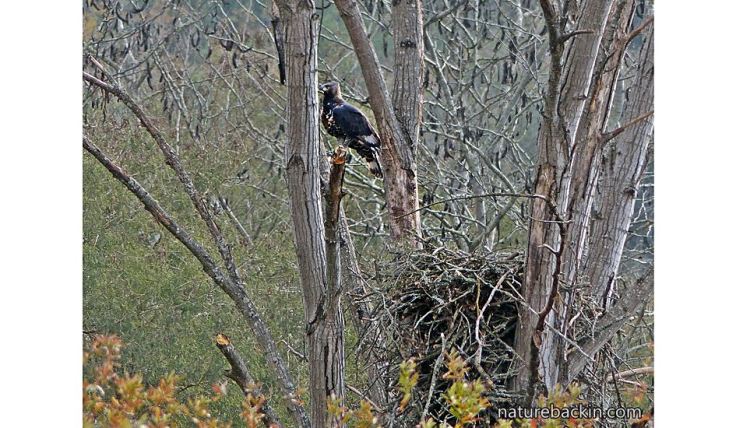
After a period of absence, a pair of Crowned Eagles has returned this year to their nest near the Mpushini River, where they have started rebuilding, hopefully in preparation for breeding. We were fortunate enough to spot both birds working on the nest together. (The distance is a bit far for my camera lens, but I thought the unusual sighting justifies the grainy pictures)

While at the Aloe Festival we attended two other talks that were part of this year’s programme.
One, by Tammy Caine from Raptor Rescue, highlighted the dire situation of vultures in Africa as a whole, and in southern Africa in particular. Six of the 11 species of vulture in Africa are at ever increasing risk of extinction. In South Africa, there are eight species of vulture, and six of these are listed as critically endangered. On average, vulture populations in South Africa have declined by 62 % over the past 30 years.
Threats to vultures include deliberate or accidental poisoning resulting from the agricultural industry, including from poisoned carcasses left out for predators; lead poisoning from carcasses harbouring lead pellets left by hunters; collisions with power lines and wind turbines; electrocution on power lines; deliberate poisoning by game hunters/poachers; and the deliberate killing of vultures for the traditional medicine trade.
One of the reasons for the use of vulture body parts in traditional medicine is because of the belief that vultures have clairvoyant powers that can be passed on through the ingestion of their body parts by humans. Because of the numbers required for this thriving trade and because the commonest method of killing is poisoning groups of vultures, this trade is contributing significantly to the dramatic decline in vulture populations in KwaZulu-Natal and elsewhere. Projects to raise awareness among traditional healers and to seek compromises and alternatives have been initiated.

Portrait of a Cape Vulture. Photographed at the African Bird of Prey Sanctuary
Vulture conservation projects in KwaZulu-Natal include the Maloti-Drakensberg Vulture Project, working to conserve the Bearded and Cape Vulture species in that mountainous region, and the Zululand Vulture Project focussing on conserving the vulture species found in the northern Kwazulu-Natal region, these being the Lappet-faced Vulture, the White-backed Vulture, and the White-headed Vulture. For more about the projects see http://projectvulture.org.za/ and http://www.raptorrescue.org.za/Projects/
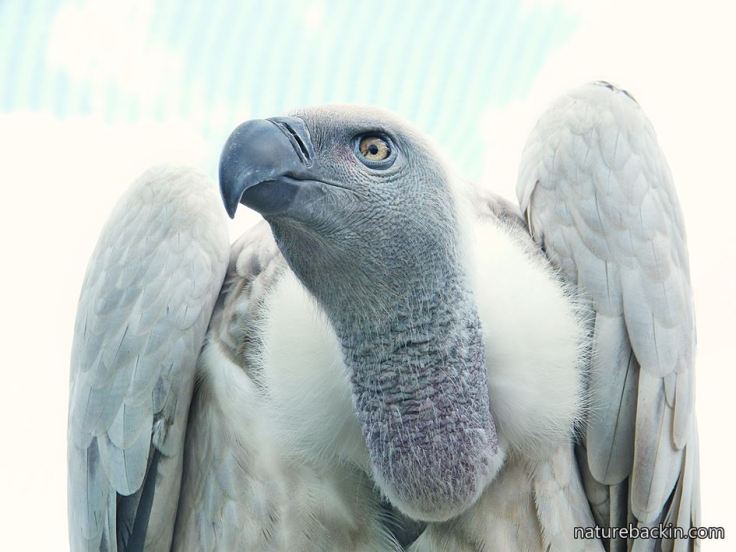
The Cape Vulture is southern Africa’s only endemic vulture species, that is, it does not occur outside of this region. Its status has been uplisted to ‘endangered’. Just as for other vulture species, Cape Vultures fall victim to many threats, including poisoning and electrocutions and collisions with energy structures, and as a result their numbers are declining rapidly. I took this photograph of a rescued Cape Vulture at the African Bird of Prey Sanctuary in Ashburton
In addition to its work with other raptors and vulture species, the African Bird of Prey Sanctuary in Ashburton is involved in a conservation breeding project for the Bearded Vulture. This vulture is classified as critically endangered in southern Africa where an additional threat is that its breeding territory is diminishing significantly. It is estimated that only 368-408 individual birds (109-221 breeding pairs) remain. With these already low numbers continuing to decline, there is a high probability of extinction of this species in South Africa and Lesotho, making intervention projects critical for the survival in our region of this sub-Saharan African sub-species. For more on this fascinating breeding project see here.
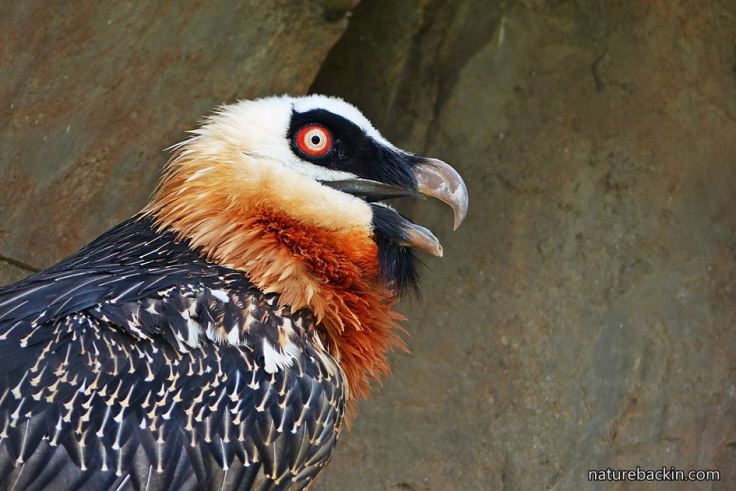
An adult Bearded Vulture, part of the long-term conservation breeding project at the African Bird of Prey Sanctuary in Ashburton
The decline in numbers of such magnificent birds is sobering and distressing, even before one becomes aware of the unique role that vultures play in the broader ecology, a role that effects biodiversity and controls the spread of diseases. The loss of vultures impacts even on humans in a very direct way.
In her talk, Tammy explained that in their role as eaters of carrion, vultures rid the environment of decomposing carcasses. Their powerful digestive systems enable them to eat carcasses infected with anthrax, brucellosis and rabies. They therefore prevent the further spreading of these diseases, which not only affect other animals, but eventually have a very direct impact on human health and human lives.
Vultures are vulnerable to many poisons, and even some pharmaceuticals are fatally toxic to birds, including vultures. In India, after a dramatic crash in vulture populations, it was eventually discovered that residues of the anti-inflammatory diclofenac, used as a veterinary medication, remained in cattle carcasses resulting in mass poisonings of vultures. The numbers of vultures dropped off to such an extent that, with no competition from vultures at carcasses, the numbers of scavenging domestic dogs increased rapidly resulting in a massive rabies epidemic. The numbers, running into the tens of thousands, are incredible and frightening. For more details on the rabies tragedy that ensued from the near eradication of vultures in India, see an article in Scientific American here
Saving our vultures from the brink of extinction is important for so many reasons, and we can only hope that raising awareness coupled with conservation projects may lead to protecting our vultures from persecution and the many threats that are so rapidly taking them towards extinction.

In the past and probably not all that long ago, there would have been vultures in and around the Mpushini Valley, but they are gone
I want to tell you about an interesting research project into Samango monkey populations in the small remaining forested regions of the KwaZulu-Natal Midlands, which we heard about at the Aloe Festival, and also share with you a visit to a truly stunning garden, formerly a rose garden, now dedicated to aloes. But I think that maybe I should save these for another post, next week.
Instead of ending off by saying, “to be continued” (although this is true) I’d rather end off with a link to a version of Adele’s song “Hallo”, the song that triggered the rather tired pun (yes I admit it!) of the title of this post.
This version of “Hallo” is sung in isiXhosa by Lance Romeo. Since this video was first posted it has gone viral, so you may already have seen it, if not listen again. For more on Lance Romeo and this version of the song, see this newspaper article here
And to see the video of his version of “Hallo” see here:
And now, its hallo from him and goodbye from me. See you on the other side.
Posted by Carol

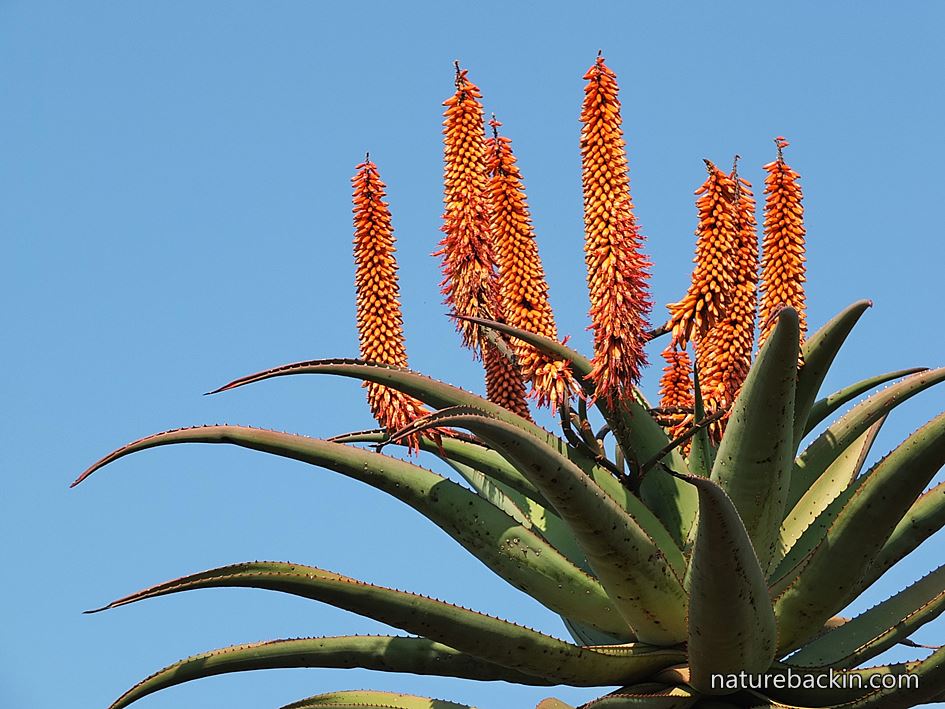







July 8, 2017 at 7:25 pm
We have a Zulu as Pres and just how difficult would it be for Senor ”Shower Head” to get one of his boeties to start an educational program against the sort of Muti trade we know only too well.
But then, we are dealing with Zuma .. so .. ’nuff said, I guess.
LikeLike
July 10, 2017 at 11:47 am
Unfortunately, across time and space, not many governments or presidents have been proactive with regard to conservation and environmental protection. Worse still, there are even some presidents who are actively working to undermine environmental protection.
LikeLiked by 1 person
July 10, 2017 at 11:59 am
Yes, one might say they trump all efforts, perhaps?
LikeLiked by 1 person
July 10, 2017 at 12:50 pm
Sadly so.
LikeLiked by 2 people
July 8, 2017 at 6:21 pm
The Cape Vulture is simply beautiful. but I do have a soft spot for vultures.
LikeLiked by 2 people
July 10, 2017 at 11:41 am
Me too. We went on a hike in the nearby mountains yesterday and were fortunate enough to see one of the rare Bearded Vultures flying free.
LikeLiked by 1 person
July 7, 2017 at 2:15 am
Interesting post, Carol. There is a lot to learn about your area. Sad about the vultures (and countless other creatures) that are facing extinction because of humans. When we will wake up?
LikeLiked by 2 people
July 7, 2017 at 6:18 am
I fear we may not wake up in time. It is already too late in many respects and for many species. I hope that by learning to value even the small and familiar forms of life around us we can try to sustain them as they ultimately sustain us.
LikeLiked by 1 person
July 6, 2017 at 8:36 pm
I have seen aloe vera in Spain, but nothing like so lush and splendid as these specimens, which are I see aloe ferox, so maybe not quite the same. This looks a far more interesting and far-ranging festival than I could ever have imagined, soi I’m looking forward to the next installment.
LikeLiked by 2 people
July 7, 2017 at 6:12 am
The number and variety of aloes is amazing and they hybridise too! I am looking forward to sharing the fabulous aloe garden in the next post.
LikeLiked by 1 person
July 6, 2017 at 6:52 pm
I love this aloes. I last saw them ‘in the flesh’ when we went to visit Great Zimbabwe years ago. They have a mysterious other worldly look when growing in the wild.
LikeLiked by 2 people
July 7, 2017 at 6:08 am
‘In the flesh’ is appropriate for aloes as they are indeed fleshy plants, but with a powerful sculptural quality. I think Great Zimbabwe lends not only the aloes a deep sense of mystery. An amazing place!
LikeLiked by 1 person
July 6, 2017 at 6:43 pm
Such spectacular birds…wow! And beautiful images.
LikeLiked by 2 people
July 7, 2017 at 6:03 am
Thanks. Yes they are spectacular. Hard to believe the rapid decline in numbers.
LikeLiked by 1 person